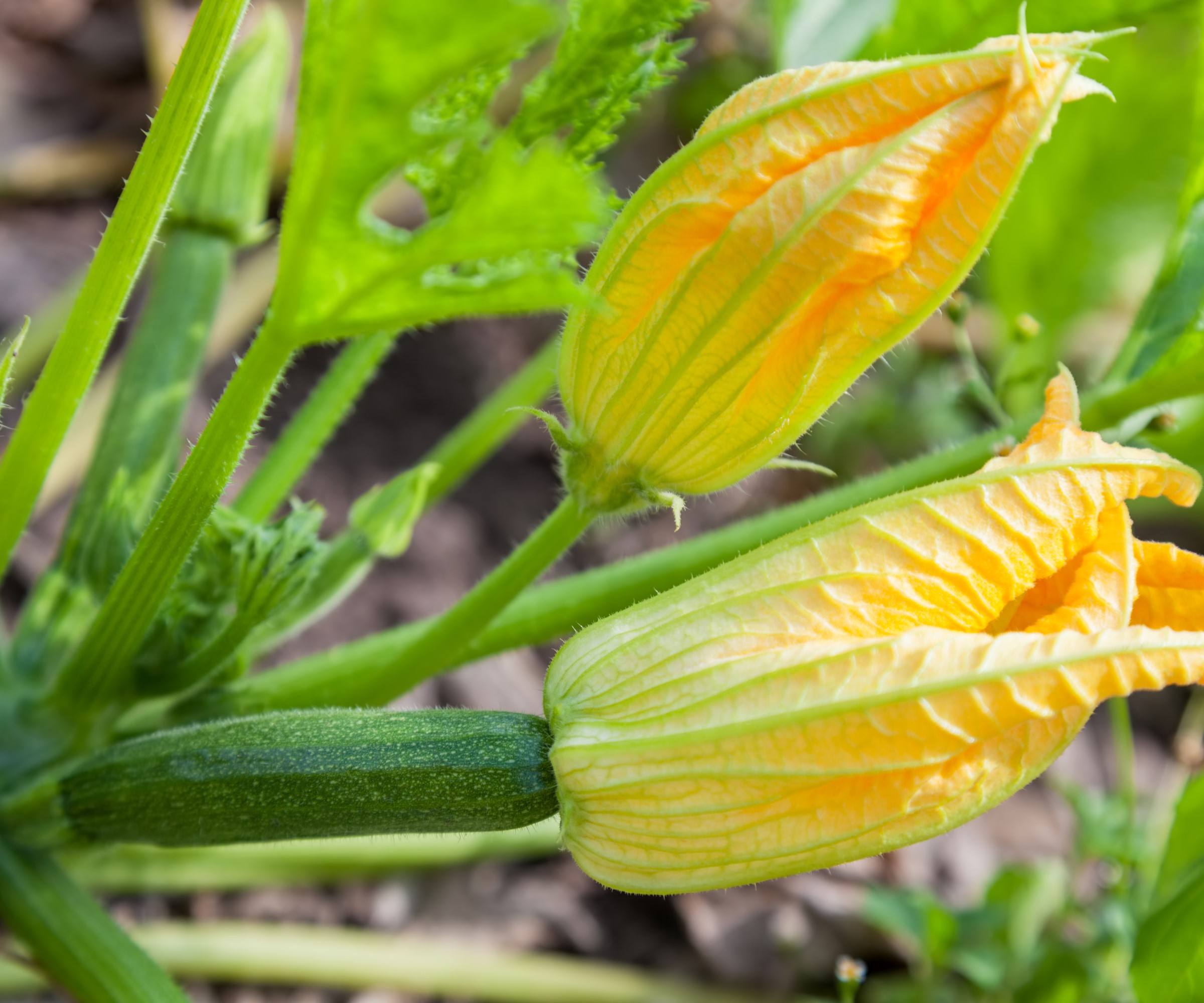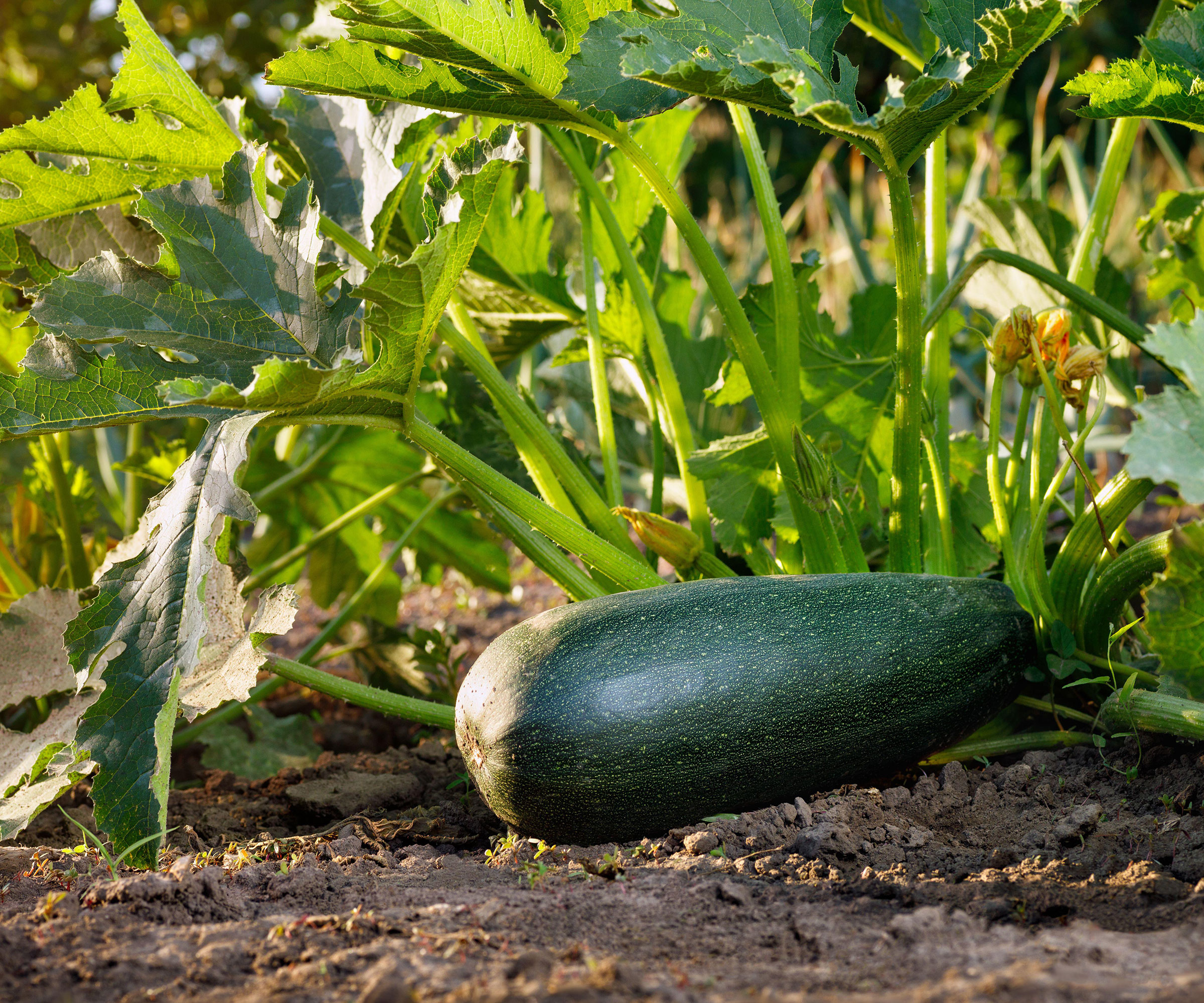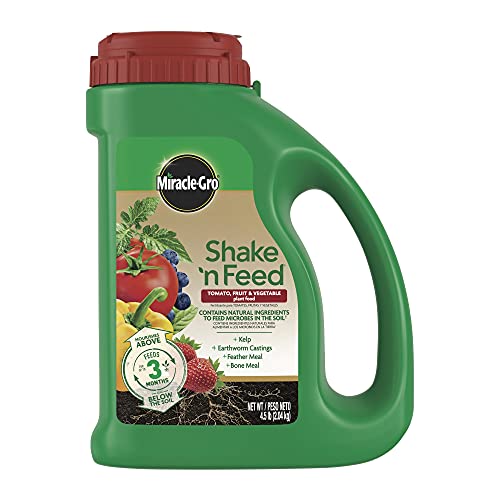Fertilizing zucchini is crucial for healthy plants and higher yields – discover when and how to feed them
Tips for a great feeding regime and how to pick a perfect fertilizer for zucchini


Zucchini are simple-to-grow plants and a summer staple in many backyard vegetable gardens. Whether growing the classic dark green long zucchini, golden and bi-color varieties, or cylindrical types, all varieties of this popular crop need fertilizing during the season.
When growing zucchini, these hungry crops need a lot of nutrients to develop into strong plants that produce an abundance of flowers and fruits through the summer. Zucchini plants are often very prolific and develop lots of fruits, but that level of abundance requires lots of nutrients to make it happen.
Whether you bake your zucchini or use them ratatouille, mixed grills, or summer salads, keeping plants well-nourished ensures a steady supply of fruits to pick. Your next challenge may be to keep on top of picking, making sure to harvest them when small or medium-sized before the flavor diminishes as they get large and woody.

Understanding how to fertilize zucchini will reward you with the biggest yield
Benefits of zucchini fertilizer
Zucchini are heavy feeders that require lots of water and nutrients. It would be a mistake not to fertilize plants and, if you don’t provide nutrients, any potential yield will be massively reduced.
Amy Enfield, senior horticulturist at ScottsMiracle-Gro, claims that ‘fertilizing is crucial for producing a healthy and high-yielding plant’ and adds: ‘Without adequate nutrition, zucchini plants will be smaller and produce fewer fruits.’
To help you have high-yielding plants as described by Amy, let's take a close look at when to fertilize zucchini and how to pick the best fertilizers to use.

Amy Enfield has over 25 years of experience in the industry and has been with ScottsMiracle-Gro for 12 years. She has a BS and MS in Horticulture from Michigan State University and a PhD in Plant & Environmental Sciences from Clemson University.
When to fertilize zucchini

Zucchini fertilizer is needed throughout the season
There are two key times to fertilize zucchini, before planting and when you see the plants start flowering. By providing key nutrients to plants at these times in the season, you can help to guarantee a fantastic harvest of zucchini.
Design expertise in your inbox – from inspiring decorating ideas and beautiful celebrity homes to practical gardening advice and shopping round-ups.
Preparation is key, so get zucchini plants off to a great start by enriching the soil. Feed the soil by adding nutrient-rich compost, well-rotted manure, or leaf mold to the site before planting the zucchini.
If you don’t have access to organic matter beforehand, adding some organic and balanced slow-release fertilizer to the site when planting can also provide a good foundation of nutrients for the plants to take advantage of. One example of a product you can add is chicken manure pellets, available at Amazon.
Once the zucchini plants start to flower, they benefit from further feeding to provide all the nutrients required to develop an abundance of fruits over the season. Again, a balanced fertilizer works well. This can be either a one-off feed with a granular product or a regular program of liquid feeding.
How to fertilize zucchini

There are many options to choose when it comes to fertilizer for zucchini
Amy Enfield from ScottsMiracle-Gro says that water-soluble, slow-release, or organic fertilizers can all ‘provide the needed nutrients’ to zucchinis throughout the growing season. She adds: ‘The type of fertilizer you use on your zucchini plants is a matter of preference as long as it provides nitrogen, phosphorus, and potassium.’
The makeup of nitrogen, phosphorus, and potassium, the three essential nutrients referred to as NPK, will be displayed on any packaging in the form of plant fertilizer numbers. You will see a ratio clearly highlighting how much of each nutrient is in any product, for example, a balanced feed will have even numbers like 5-5-5.
The best zucchini fertilizer will be a balanced fertilizer with an equal, or fairly equal, amount of NPK. ‘Balanced fertilizers, like 10-10-10, provide the needed nitrogen for green growth, plus phosphorus and potassium for flower and fruit development,’ says Amy Enfield.
Balanced fertilizers are commonly available and, as mentioned above, can be granular slow-release products or liquid feeds that are water soluble and added when you water plants. Stick to balanced products and avoid using high-nitrogen fertilizers, as this will encourage lots of leafy growth but at the expense of fruits and flowers.
Slow-release products, as the name suggests, supply nutrients to plants over time and require just one or two applications per season. These are commonly used when planting and then again in the middle of the growing season, to help avoid zucchini plants turning yellow from a lack of nutrients.
Liquid fertilizers are fast-acting, providing a quick boost of nutrients to plants. These products must be reapplied regularly and are often added every 2-3 weeks as required. They are fantastic options for feeding zucchini plants once they start flowering to provide regular boosts of nutrients to help plants keep developing flowers and fruits. Liquid feeds are also ideal for feeding zucchini growing in containers.
‘You can also look for a fertilizer specifically formulated for vegetables, like Miracle-Gro Shake ‘N FeedTomato, Fruit & Vegetable Plant Food, which usually contain a boost in calcium to help prevent blossom end rot,’ adds Amy Enfield.
Such products formulated for vegetables or tomatoes might not be completely balanced but will contain all the nutrients required for healthy zucchini plants and a top harvest. These products will also come as both granular and liquid fertilizers.
Shop zucchini fertilizers
FAQs
Is tomato fertilizer good for zucchini plants?
A fertilizer for growing tomatoes is suitable for all fruiting crops, including zucchini. It will contain NPK and in particular be high in phosphorus and potassium. This will help zucchini plants to develop and ripen fruits. Tomato fertilizer will also contain calcium to help prevent blossom end rot.
Using fertilizer will help boost your yield, but other tactics can help guarantee you lots of fruits. That includes zucchini companion planting, which can attract pollinators to increase the yield and deter pests. Herbs including lavender and dill or flowers like nasturtium and borage make excellent zucchini companion plants.

Drew has worked as a writer since 2008 and was also a professional gardener for many years. As a trained horticulturist, he worked in prestigious historic gardens, including Hanbury Hall and the world-famous Hidcote Manor Garden. He also spent time as a specialist kitchen gardener at Soho Farmhouse and Netherby Hall, where he grew vegetables, fruit, herbs, and cut flowers for restaurants. Drew has written for numerous print and online publications and is an allotment holder and garden blogger. He is shortlisted for the Digital Gardening Writer of the Year at the 2025 Garden Media Guild Awards.


